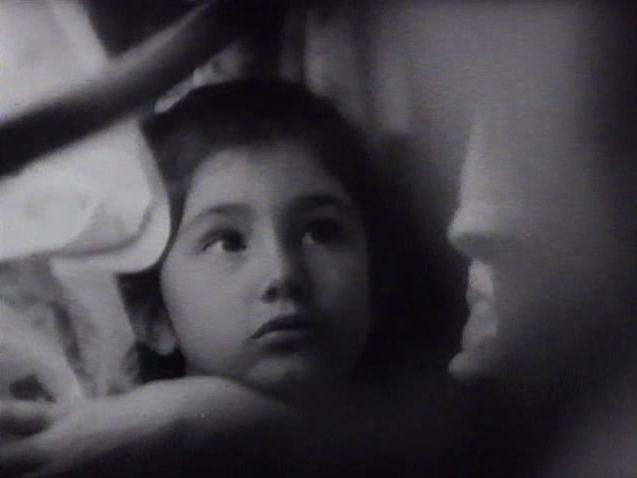
“– to flee –
out into the open, into four dimensions (three + time), in search of our own material, our meter and rhythm.”
Dziga Vertov1
“In the USSR, thank god, there are not just functionaries and dissidents. Arthur Pelechian, an Armenian filmmaker living in Moscow, works. On documents, on Armenia, on the cosmos and on the theory of montage.”
Serge Daney2
“I want to say by way of conclusion: if Vertov, relying on his montage method based on the interrelation between adjacent elements, invited filmmakers to go ‘flee – out into the open’, into the relativity of space and time (according to Albert Einstein’s theory), then the method of montage-at-a-distance, based on complex forms of the interrelation of different processes, pushes to the outermost, into a place where our notions and laws of space and time are useless; where those who are being born do not know whom they kill, and those who are dying do not know whom they beget.”
Artavazd Peleshian3
“One can not help but suspect that Pelechian’s own obduracy is one of the main causes of this situation – that his obscurity is willed, and that, rather than seeking out an audience in his own time, his films are intended to serve more as records of the present era for future centuries. The prints, we can muse, are thus immured in a remote Siberian nuclear bunker, to be exhumed only when all other traces of our civilisation have crumbled to dust. Indeed, only a cinema centred on a pre-Babelic aesthetic system such as Pelechian’s, heedless of the formal codes and language systems of our time, could even hope to fulfil such a role.”
Daniel Fairfax4
Jean-Luc Godard: Your films, it seemed to me, could only come out of cinematic traditions. As if the work of Eisenstein, Dovzhenko and Vertov had managed to go on and make an impression something like certain films of Flaherty or certain documentaries of the Cuban film-maker Santiago Alvarez. A type of film both traditional and original, completely outside America, which is very strong in world cinema. Even Rome, an open city, owes something to America. When there is an occupation, the problem of resistance comes up and how to resist. When I saw your films I had the impression that, whatever defects the so-called socialist system may have, at one time certain powerful personalities succeeded in thinking differently. Probably that’s going to change. As far as I’m concerned, being a critic of reality and of the means used to represent it, I rediscovered the technique that Russian film-makers used to call montage. Montage in a deep sense, in the sense in which Eisenstein called El Greco the great montage artist of Toledo.
Artavazd Peleshian: It’s difficult to talk about montage. That is certainly the wrong word. Perhaps one has to say ‘the system of order’. To cast light, beyond the technical aspect, on reflecting the depths.
Jean-Luc Godard: What is the Russian word for montage? Isn’t there one?
Artavazd Peleshian: Yes, montaj.5
“What do I mean by ‘resonance’ in this context? The figure, perhaps, to have best theorised the phenomenon is the Armenian filmmaker Artavazd Pelechian, who in a text discussing his own work developed the notion of ‘distance montage’ (or, alternatively, ‘contrapuntal montage’). Here, Pelechian specifically opposes his use of montage to what he termed the ‘classical montage’ of Vertov and Eisenstein. Whereas his forebears focus attention on the ‘reciprocal relationship of juxtaposed scenes’ in order to generate ‘meaning, appreciation, conclusion’ in a sequence, in Pelechian’s films: ‘the very essence and the principal accent of the montage resided […] less in the assembly of scenes than in the possibility of disconnecting them, not in their juxtaposition but in their separation.’ Given two montage elements which, due to what Pelechian calls their ‘visual resonance [obraznoe zvoutchanie]’, would have been brought together in Eisenstein’s or Vertov’s aesthetic systems, Pelechian seeks instead to ‘separate them by inserting between them a third, fifth or tenth element.’ It is thus through the ‘interaction of numerous links’ between two shots situated remotely from each other that Pelechian is capable of expressing the meaning of his sequence in a manner ‘far stronger and more profound than through direct collage.’”
Daniel Fairfax6
- 1Dziga Vertov, ed. Annette Michelson, trans. Kevin O’Brien, “Kino-Eye: The Writings of Dziga Vertov,” Berkeley: University of California Press, 1984, p. 7.
- 2Serge Daney, « À la recherche d’Arthur Pelechian, » Libération, August 11, 1983. [Translation by Daniel Fairfax and Laurent Kretzschmar, 2012.]
- 3Artavazd Peleshian, “Montage-at-a-Distance, or: A Theory of Distance,” Moe Kino, Erevan: Sovetakan Grogh, 1988. As published in LOLA, December 2015.
- 4Daniel Fairfax, “Artavazd Pelechian,” Senses of Cinema, March 2012.
- 5Jean-Michel Frodon, « Un langage d'avant Babel : conversation entre Artavazd Pelechian et Jean-Luc Godard, » Le Monde, édition du 2 avril 1992. [Translation via Kino Slang.]
- 6Daniel Fairfax, “Montage as Resonance: Chris Marker and the Dialectical Image,” Senses of Cinema, September 2012.

